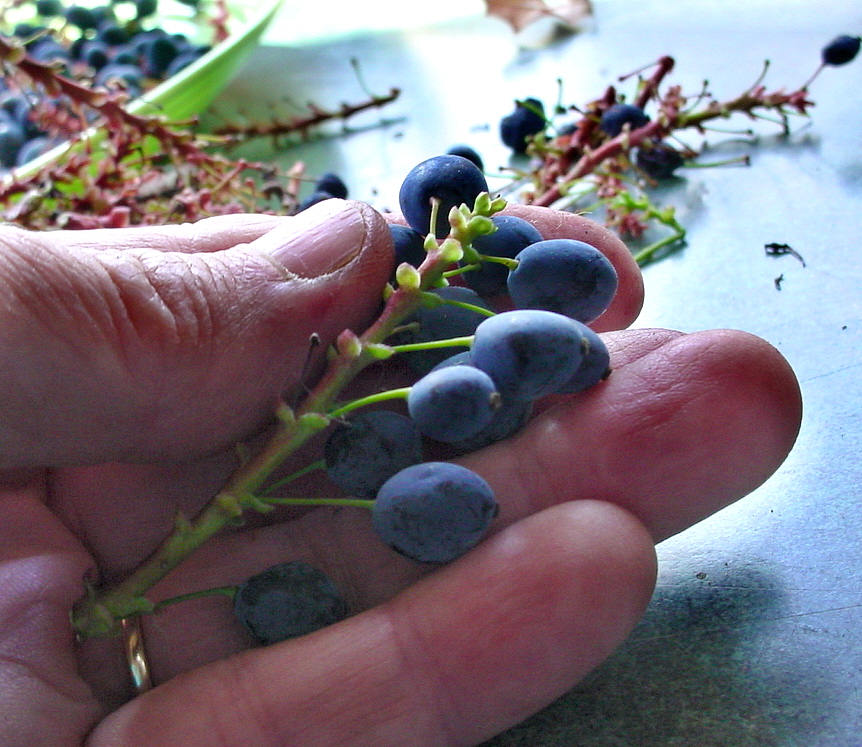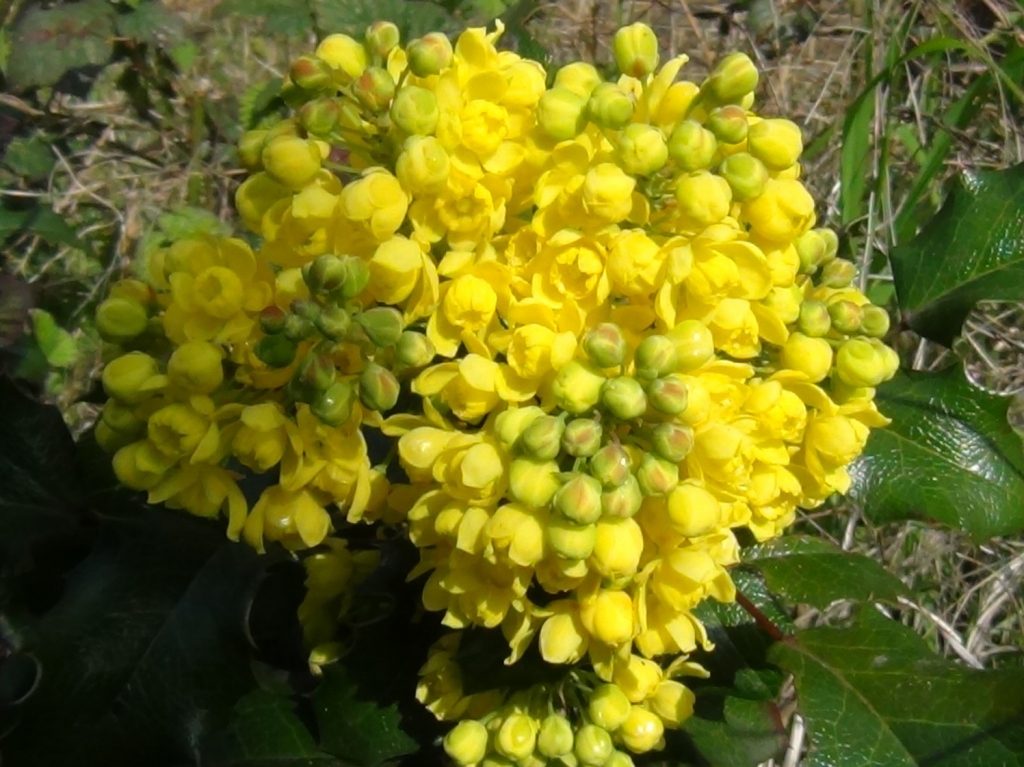
The upper surface of each leaflet is waxy. They may have attractive red or bronze patches at times, such as when they are first produced, and they are often red in winter. The leaflets are usually medium to dark green in color. There is a very noticeable vein down the center of each leaflet. At the tip of the leaf there is a terminal leaflet that is joined to the stem with a stalk. They are arranged in two parallel rows and are joined to the leaf stem without a stalk. There are generally seven to nine of them in a leaf. The stiff and leathery leaves of Oregon grape are technically leaflets, since the leaves are pinnately compound. Twigs are light brown, fairly stout, virtually unbranched, and with a coarse texture with corky, gray brown colored bark.

It is 1-4 cm in diameter, covered by a thin outer bark that covers a bright yellow inner bark. The plant has deep vertical taproot and a network of fine roots in the upper layer.
OREGON GRAPE FULL
The plant does best in partial shade in moist, rich, well-drained, acidic soils and is intolerant of alkaline pH soils, poor soils, compacted soils, clay soils, wet soils, heat, full sun, exposed sites, or at windswept corners of foundations. The plant is found growing in relatively dry to moist rocky sites in open coniferous forests, and forested slopes. Oregon grape is a medium-sized, broadleaf evergreen shrub that grows about 1–2 m (3 ft.

The fruit is an excellent gentle and safe laxative. Roots are used in herbology as a nutritional aid to the digestive and circulatory systems. Oregon grape extracts were shown in one pharmacological study to reduce inflammation, and to stimulate the white blood cells known as macrophages. Berberine is extremely bactericidal, amoeboidal and trypanocidal. The plant contains the alkaloids berberine and hydrastine. Both the roots and rhizomes have been used medicinally for hundreds of years to treat infections because of their powerful antibiotic properties.

The specific epithet aquifolium represents “sharp-leafed” (as in Ilex aquifolium, the common holly), referring to the spiny foliage. Genus name Mahonia honors Bernard M’Mahon, American horticulturist and author of The American Gardener’s Calendar (1806). It is known by a large variety of different common names including Holly leaved barberry, Holly-leaved Oregon-grape, Mountain grape, Shining Oregon-grape, Tall Oregon-grape, Berberis, holly leaf barberry, mahonia, Oregon Holly-Grape, Piper Oregon-grape, Piper’s Oregon-grape, Oregon Holly, Barberry, Oregon barberry, Oregon grape holly, trailing mahonia, jaundice berry, wood sour, sow berry, Pepperidge bush, sour-spine, Oregon mountain grape, wild Oregon grape, holly-leaved barberry, California barberry, Oregon grape-holly and tall mahonia. aquifolium is the state flower of Oregon. It was introduced horticulturally from the Pacific Northwest into Europe in 1822 and is considered an unfamiliar invasive species there, having been particularly successful in central and eastern Germany. Mahonia aquifolium is native to western North America from British Columbia to California and eastward to Idaho and Montana. Mahonia aquifolium commonly known as Oregon-grape is a species of flowering plant of barberry family (Berberidaceae).


 0 kommentar(er)
0 kommentar(er)
